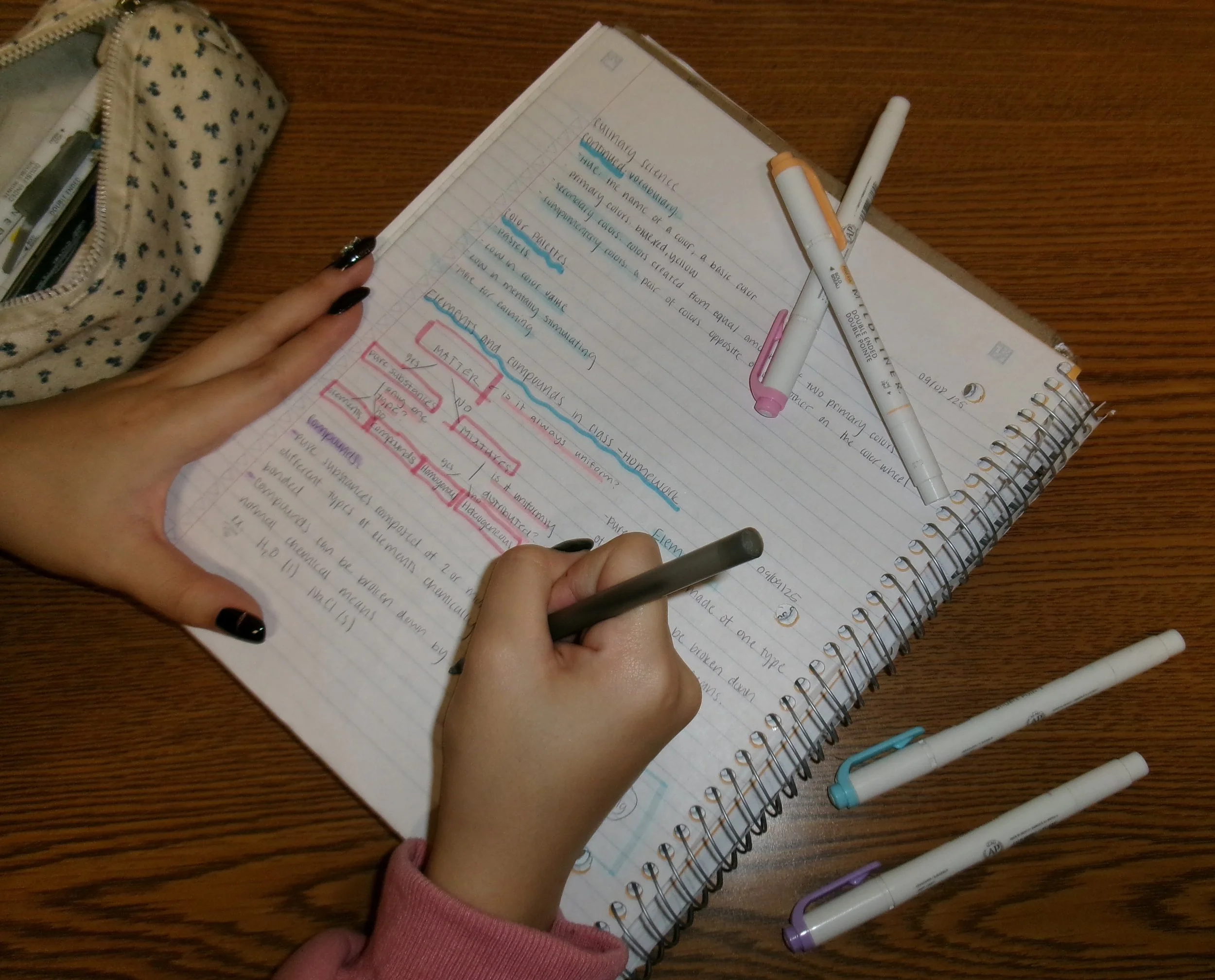Classroom Experiment Shows Writing by Hand Boosts Memory
Photo: Dilan Below
By THE ARGUS STAFF
with thanks to Jayden Courtois and Noushin Islam
An experiment the Argus conducted with 57 Midwood students on September 9 found that taking notes by hand leads to a 20% improvement on memory retention over just careful listening.
The findings correlate with neuroscience that shows that writing by hand triggers activity in more parts of the brain than typing or simply paying attention.
The implication is that students who consistently handwrite well-organized notes could find that they perform 20% better (or more) on tests and other memory-based assessments than students who focus diligently in class but do not take handwritten notes.
At the beginning of the experiment, students were instructed to divide a piece of paper into three sections.
They were then slowly read a list of 20 common grocery store items such as ketchup, carrots, and Frosted Flakes and had to try to write them all down on the first section of their paper. They then had to ball up that section and throw it away. After waiting two silent minutes, the students were challenged to rewrite everything they could remember from the list on the second section of the paper.
After these steps, it was time for the listening portion of the experiment. This time, the students had to simply focus and listen as a similar list of 20 grocery items was read at the same pace as before and try to memorize it without jotting anything down.
Again they were given two minutes to try and retain the information and then two minutes to write it all on the final section of the paper, just as before. The question was whether there would be any differences in memory performance between the two methods.
Well, the results are something to write home about. Out of the 57 students, 41 remembered more items after writing than after just listening, even though they knew better what to expect during the listening round. On average, students remembered 9.7 items after writing compared to 7.9 items after listening, demonstrating a 20% increase in retention, though some students experienced bigger differences. Two participants remembered 16 of the 20 items while writing, roughly twice what they remembered while listening.
These findings corroborate other larger studies in brain science. For example, a 2014 study conducted by Audrey van der Meer and Ruud van der Weel at the Norwegian University of Science and Technology found that students who took their notes on a computer were “typing without thinking” and retained very little information mentally.
“It kind of goes in through your ears and comes out through your fingertips, but you don’t process the incoming information,” van der Meer told Scientific American in 2024.
On the other hand, when taking notes by hand, students’ brains were more active across several regions, including those connected to memory.
“As you’re drawing a letter or writing a word, you’re taking this perceptual understanding of something and using your motor system to create it," explained Sophia Vinci-Booher, an assistant professor of educational neuroscience at Vanderbilt University. Those complicated links that occur during handwriting are the secret that make it so effective as a memorization tool.

